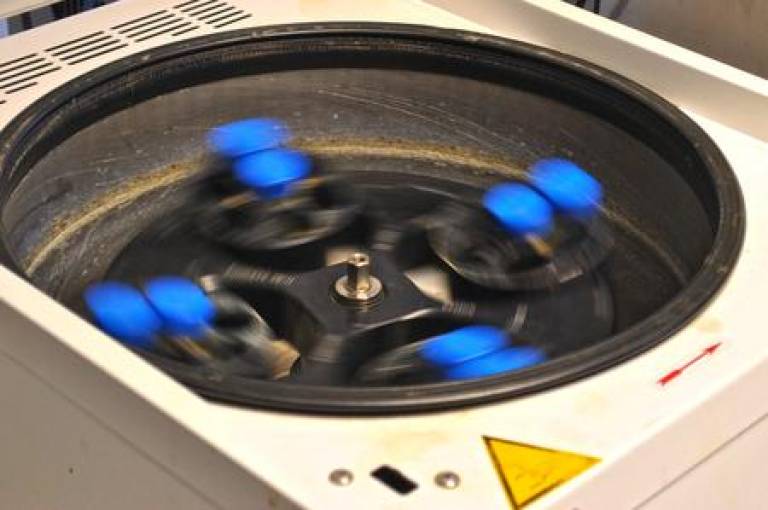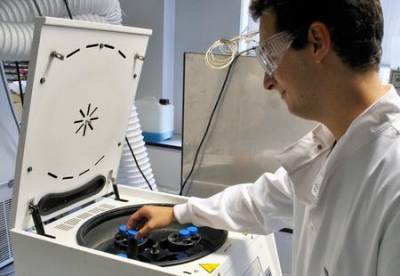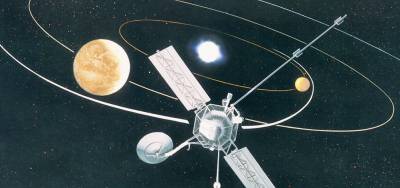Taking a spin
7 October 2013

In the 1979 James Bond film Moonraker, 007 survives an attempt to kill him in a giant centrifuge. In a film not particularly famed for its scientific accuracy, this scene, at least, is plausible. Astronaut training centres use human-sized centrifuges to simulate the high G-forces astronauts experience during takeoff, and these can indeed be harmful or fatal if they are too high.
On a smaller and less deadly scale, centrifuges are widely used in labs to subject samples to a centrifugal force. The centrifuge above is located within UCL Chemistry, and is used for tasks such as separating out mixtures made up of liquids or solids that have different densities, as they are affected by the force to different extents.
While in operation, health and safety concerns mean that the lid of the centrifuge is, of course, closed, as it spins very fast. However the device has been set (slowly) spinning by hand here to demonstrate the moving parts.
In the photo below, more health and safety good practice in action: safety glasses and a white coat when manipulating things in the lab.

Centrifugal force is technically referred to as a 'fictitious force' by physicists. In a centrifuge, or indeed in a car going around a roundabout, there is no physical force pulling the contents (the sample, or the passengers) outwards. Rather, there is a force pulling the container (the test-tube, or the car) towards the centre (a centripetal force), which presses against what is inside. This behaviour manifests itself as a centrifugal force only to objects which are within the rotating system: the only force from the perspective of a stationary observer is the centripetal force.
This is an example of how different frames of reference (in this case, a rotating frame of reference) can be an important concept in science. Indeed, the relationships between frames of reference form the foundation of Einstein's theory of special relativity.
Photo credit: O. Usher (UCL MAPS)
Links
- UCL Chemistry
- Wikipedia article on fictitious forces
- Wikipedia article on frames of reference
- Roger Moore being centrifuged in Moonraker (video)
- Article and video on the European Space Agency's centrifuge facility
High resolution image
Closeup of centrifuge
PhD student loading test-tubes into a centrifuge
These images can be reproduced freely providing the source is credited
 Close
Close




